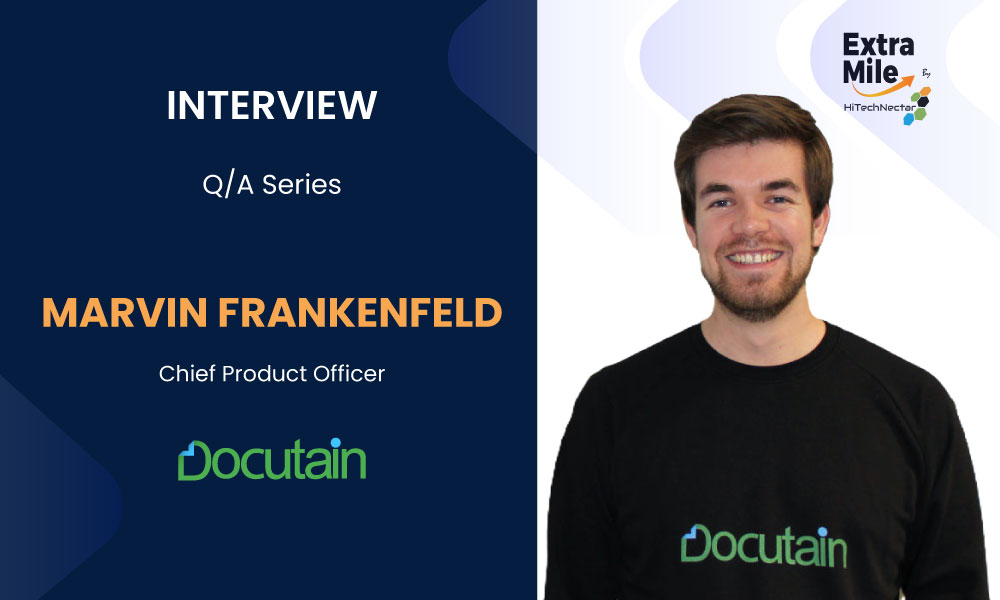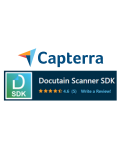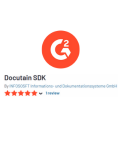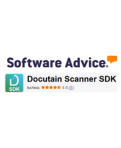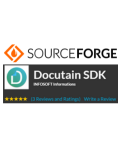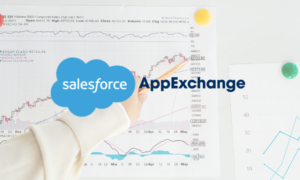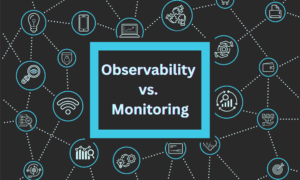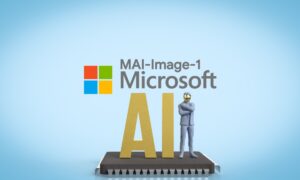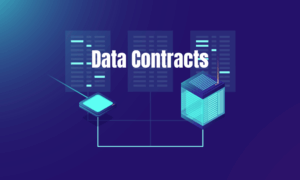Welcome to another insightful episode of ExtraMile by HiTechNectar! This series brings you closer to tech leaders shaping the future with groundbreaking ideas, innovations, and industry insights.
Today, we are thrilled to host Marvin Frankenfeld, the Chief Product Officer at Docutain, a frontrunner in mobile document management and scanning solutions, developed by INFOSOFT. Marvin shares the innovative journey of Docutain, a product that has revolutionized document workflows for businesses and consumers alike.
In this interview, Marvin talks about the importance of entrepreneurship, AI-powered solutions, and the critical role of data security in today’s tech realm. From the rapid evolution of mobile scanning to the powerful Docutain SDK used by industries worldwide, Marvin gives insights into the future of document management.
Get ready to explore how the latest technologies, such as OCR text recognition and real-time data extraction, are reshaping workflows for companies in different sectors.
Hello Marvin! Hope you are doing well!
Q1. You assert yourself as a fan of entrepreneurship, innovation, and app development. How are they interconnected, and why are they important in today’s world?
Ans. One of the innovations with a huge impact on the daily life of almost every person that I was able to experience is the smartphone. Most people can no longer imagine life without it, it is always there. A great success in terms of digitalization. On the other hand, a lot of processes, in B2C, as well as B2B, are still paper based. Today, smartphones are powerful tools that can be facilitated to solve this problem for many industries. By scanning paper documents with the smartphone’s camera, turning the analog data into digital data, this gap can easily be closed. In today’s society everything needs to be as fast and automated as possible. That is why we go way beyond just taking a picture with the camera and provide mobile solutions that turn each smartphone into high performing, high quality document scanners.
Q2. Heartiest congratulations on receiving the recognition of the Best Mobile Document Scanner SDK Solutions Provider 2024 in Germany by the Innovation in Business Magazine of AI Global Media. What sets Docutain apart from others in the highly competitive industry?
Ans. Thanks! The feedback from our customers, who integrated the Docutain SDK, confirmed our USPs: The Scan SDK delivers high-quality scans and reliably detects information in real-time. These steps happen 100% offline, locally on the device, and with no server connection. This is especially important when dealing with sensitive information, e.g. in the banking or insurance industry to ensure data privacy. In contrast to one of our biggest competitors in the Photo Payment sector, who works with a server-based solution, our banking app provider clients value that the data recognition works on the smartphone itself, so that there is no risk of server failure or data privacy issues.
The Docutain SDK serves ready-to-use UI components, which means that the SDK can be integrated in several minutes.
Q3. We are eager to know about your role at Docutain. What are your key responsibilities as the company’s Chief Product Officer, and what is your strategy for robust decision-making?
Ans. As CPO it is my responsibility to develop our business strategy, along with my team colleagues from Marketing, Sales and Development. I am the interface between these departments and coordinate that we are in close exchange and include insights from all to improve our products.
My strategy for robust decision-making is to rely on data and customer feedback. Every decision that we make regarding strategy and product enhancement is based on A/B testing, KPI measurement, and customer requirement analysis. It is key to understand the customers’ challenges to be able to provide a solution tailored to their needs.
Q4. The technological sector is rapidly progressing. Which tech trends do you think have been invaluable over the last decade and can bring about a transformation in the upcoming years?
Ans. Our business focuses on digitizing paper-based documents for private consumers and businesses alike to work more efficiently. Document scanning, OCR text recognition and data extraction are powerful technologies to automate data entry and facilitate document workflows.
Real time document recognition and data extraction need to work reliably in a lot of very different scenarios. With the introduction of machine learning and AI we got the possibility to enhance our solutions quite a lot compared to before when we had to rely on algorithms that existed for 40 years or even more.
Apart from ours, machine learning and AI have numerous use cases for almost every type of business and can make everyone’s daily life easier. I think AI in particular will progress very fast and I am thrilled to experience the possibilities to come.
Q5. How is product marketing different from service marketing? What are the crucial considerations of result-driven product marketing?
Ans. Product marketing focuses on promoting tangible items with specific functionality, while service marketing deals with intangible offerings, emphasizing the quality of customer experience and trust. For both types, key considerations include understanding the target customer, crafting clear value propositions, and leveraging data-driven strategies to optimize reach and engagement.
For our products, be it the Docutain Scanner app for Android and iOS to download in the Google Play and App Store or the Docutain Software Development Kit, it is crucial to clearly communicate the added value of the product to our target groups. We must really understand the use case of our prospects in the various industries and proof that we can deliver a high-quality solution facilitating their processes. For us it is important to understand that product marketing and service marketing are interconnected. If we deliver high quality service to our customers, the chances are high that we will gain valuable insights from them into how they use our products, which problems they might face and what kind of new features they would like us to introduce. This information can then be used in development and later in product marketing, so that we can be sure the product gets marketed in a way the user is using it and understands the need for the product.
Q6. Personalization is a common approach in contemporary marketing practices. What is your opinion on it, and what are your suggestions for companies to adopt a personalized approach?
Ans. The level of personalization depends on the product or service being offered, but a generic approach with only one message for all target groups is not the way of communicating anymore. For our Docutain SDK customers and prospects we make sure to speak the language of the individual industry and deliver use cases proofing that we have experience with industry-specific challenges. If you compare two user groups of our Docutain SDK, truck drivers for logistic companies and banking app users doing a photo payment, they face pretty different challenges. Truck drivers work in a time sensitive environment, often combined with non-ideal scanning conditions, like bad lighting when they work through the night. On the other hand, when doing a photo payment with your banking app, you are not stressed, the environmental conditions for scanning are good. However, you care about your personal data that is written on the invoice you are about to scan, so you want to make sure the solution you use offers absolute data security.
In my opinion, personalizing your marketing practices to the group of users you want to address is key. When potential customers visit your website, they need to understand if you can help them or not within seconds. They don’t have the time or nerve to read and understand your whole website and then decide by themselves if you can help them or not. It sounds easy, but it requires deep market understanding and constant exchange with prospects and customers. But trust me, it is worth the time and money.
Q7. Professional scanning facilities are crucial for the banking, finance, logistics, and insurance sectors. What features should we consider while looking for an effective scanning facility provider?
Ans. There are five key factors to consider:
Time:
How long does it take to integrate the scanner and how much time needs to be spent maintaining the scanner, e.g. for future devices that will be introduced, new Android and iOS versions, etc. With our ready-to-use UI components you can get started within minutes and don’t need to even think of maintenance, as we deliver updates on a regular basis making sure the scanner works flawlessly now and in the future.
Quality:
There are quite a few open-source scanning solutions on the market that you might be tempted to use as you don’t need to invest any money on licensing fees. In your first tests on your device, they might even provide decent results. But what if it comes to the thousands of different devices that are used out there, the variety of use cases and environmental scenarios your user will use the scanner. Can you test them as well to ensure high quality in all these scenarios? We can. Our app and SDK are used by millions of users around the world daily who provide us with lots of valuable feedback. Also, we invest heavily in automated testing pipelines with lots of different real devices.
If your back office receives scanned documents of a bad quality, your cost will be much higher compared to investing some money in a professional scanning solution like ours.
Data Safety:
Especially when it comes to the banking, finance and insurance sectors, but all other industries as well, data safety should be one of the most important key factors when comparing scanning solutions. Do you want to use a scanner that uploads your scan to a third-party server that analyzes the scanned document in order to provide some result back? Apart from your personal concerns, what about the company that is offering an app with a server-based scanner? Servers can get hacked, possibly publishing all the personal information about your customers’ scanned documents. Quite the risk for the company, don’t you think?
So make sure to look for solutions that work 100% offline on the users device with no server connections at all, like our Docutain SDK.
Support:
If you experience issues with the scanner, you want to make sure that the issue gets solved asap. When using open-source scanners and you face an issue, you are basically on your own. You need to figure it out yourself or wait for the community to fix it. Chances are high it won’t ever get fixed.
So make sure that you choose a solution that has integrated, guaranteed support with no additional cost, like our Docutain SDK.
Pricing:
Use cases are different, budgets are different, company sizes are different. A small business with 50 end users, possibly an in-house app, is not able to invest the same amount of money as an insurance company or banking app with millions of end users. However, both need the same kind of scan quality. Your provider should provide you with a pricing model that suits your business and use case to make sure you get high quality scans combined with a reasonable pricing.
Q8. Technological advancement has doubtlessly contributed to enhanced security risks within organizations. In your opinion, what is the importance of establishing a strong security framework while protecting data from vulnerabilities?
Ans. Data safety should be one of the top priorities of each company handling personal data of their customers. When it comes to scanning, the scanned documents often include very personal information. Like the kind of diseases, you might encounter when scanning documents at your doctor’s place. How much money you transfer to who when scanning invoices. Where you spend your holiday when scanning tickets. You name it. When these kinds of your customers’ data gets publicly available, e.g. due to a hacked server, it is about as damaging for a company as it can get.
This is why we initially decided to develop our scan and OCR functionality in a way that it works 100% offline and locally on the device without any server connections. Thus, data does not need to be sent or stored externally for further processing, but solely stays on the device. This was also a decisive aspect for one of our customers, a banking-app provider, who searched for a solution that was not server-based and thus ensures reliability throughout the photo payment process.
Explore Our Other Insightful Interviews:
